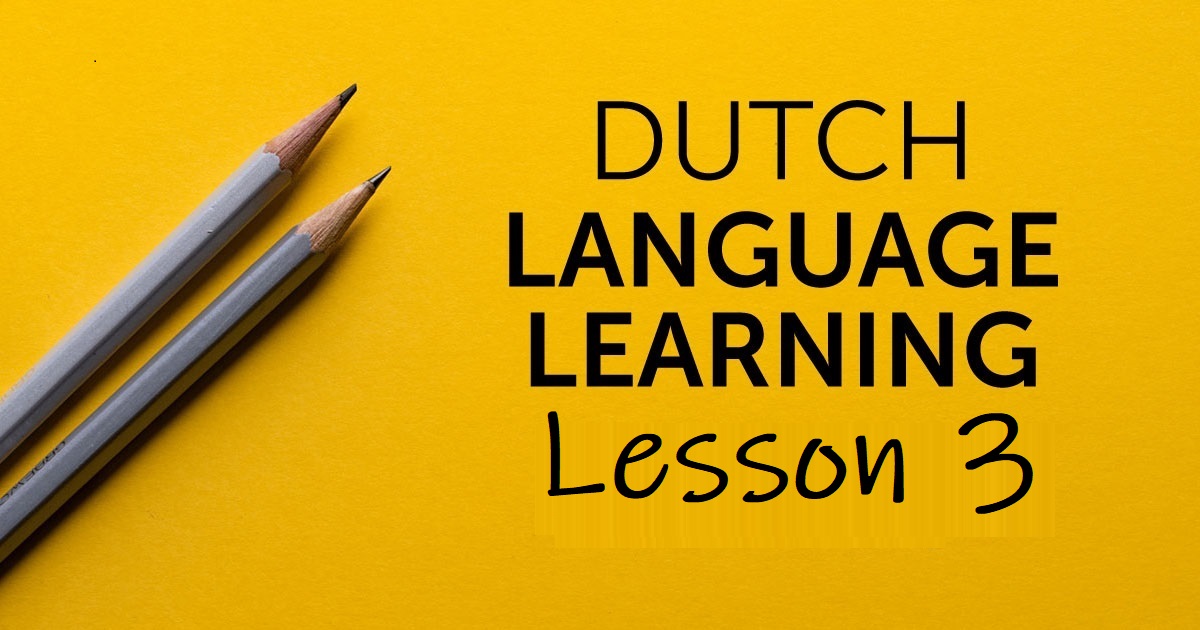Lesson nr. 3
The basic structure of a Dutch sentence
The Dutch language is challenging. That is most likely a fact rather than only an opinion. The difficulty of understanding and learning the word order in a phrase is one of the factors contributing to the language's complexity. I'll attempt to examine the fundamentals of Dutch sentences in this lesson.
A subject and a verb are the two fundamental components of a grammatical sentence. It's possible to form a sentence in Dutch using only a subject and a verb. Let's see some examples:
Subject + Verb
- Ik ren (I run)
- Het meisje zingt (The girl sings)
- Een man eet (A man eats)
Subject + Verb + (Direct) Object
- Ik praat met mijn zus. (I talk to my sister.)
- De jongen verft de schutting. (The boy paints the fence.)
- De kat eet zijn eten op. (The cat eats its food.)
In the above examples, the objects were direct, meaning something was being directly done to them. You can also use indirect objects in a sentence like this:
Subject + Verb + (Direct) object + (Indirect) object
- Ik praat met mijn zus over onze moeder. (I talk to my sister about our mother.)
- De jongen schildert het hek met verf. (The boy paints the fence with paint.)
- De kat eet zijn eten met zijn pootjes. (The cat eats its food with its paws.)
In these examples, the objects, 'mother,' 'paint,' and 'paws,' are all indirect objects because nothing is being done directly. 'Sister,' 'fence,' and 'food' are direct objects because the sister is being spoken to, the fence is the object being painted, and the food being eaten.
Dutch sentences can be as basic as using a subject, a direct verb, and phrasal verbs. You could, for instance, construct the following phrase using those three word types:
Johan en Ineke zullen komen eten. This would be: Johan and Ineke are coming for dinner.
Have you noticed that the structure is entirely different from an English sentence? In this sentence, the subjects are Johan and Ineke, the direct verb is zullen (which means "will"), and the phrasal verbs are komen eten (which literally means "coming to eat").
Dutch Sentence Structure With Adjectives
Adjectives are employed to describe nouns, much like in English (people, places, and things). The adjective comes before the noun in English sentences. Fortunately, most Dutch adjectives are governed by the same principle:
Adjective + Noun
Now let's make things more interesting. We're going to add adjectives to our earlier sentences:
Subject + Verb + Adjective + Direct object + Adjective + Indirect object
- Ik praat met mijn lieve zus over onze mooie moeder. (I talk to my sweet sister about our beautiful mother.)
- De jongen schildert het gele hek met zwarte verf. (The boy paints the yellow fence with black paint.)
- De kat eet zijn stinkende eten met zijn zachte pootjes. (The cat eats its smelly food with its soft paws.)
As you can see in these examples, the adjective goes immediately before the noun.
Adverbs in a Dutch Sentence Structure
When adding adverbs to sentences, the Dutch word order is different from the English sentence structure. In English, the adverb can go either before or after the verb. However, in Dutch sentence structure, the adverb goes after the verb.
Subject + Verb + Adverb
Examples:
Ik eet veel. (I eat a lot.)
Zij praat veel. (She talks a lot.)
De jongen schildert snel. (The boy paints quickly.)
Subject + Verb + Adverb + Adverb
What happens when you add two adverbs into a Dutch sentence? What happens to the word order in Dutch?
Ik eet altijd veel. (I always eat a lot.)
In Dutch, the last two words are the adverbs - altijd veel. Both go after the verb. Let's see another example:
Ze praat snel en vaak. (She talks quickly and often.)
Snel and vaak are the adverbs after the verb.
